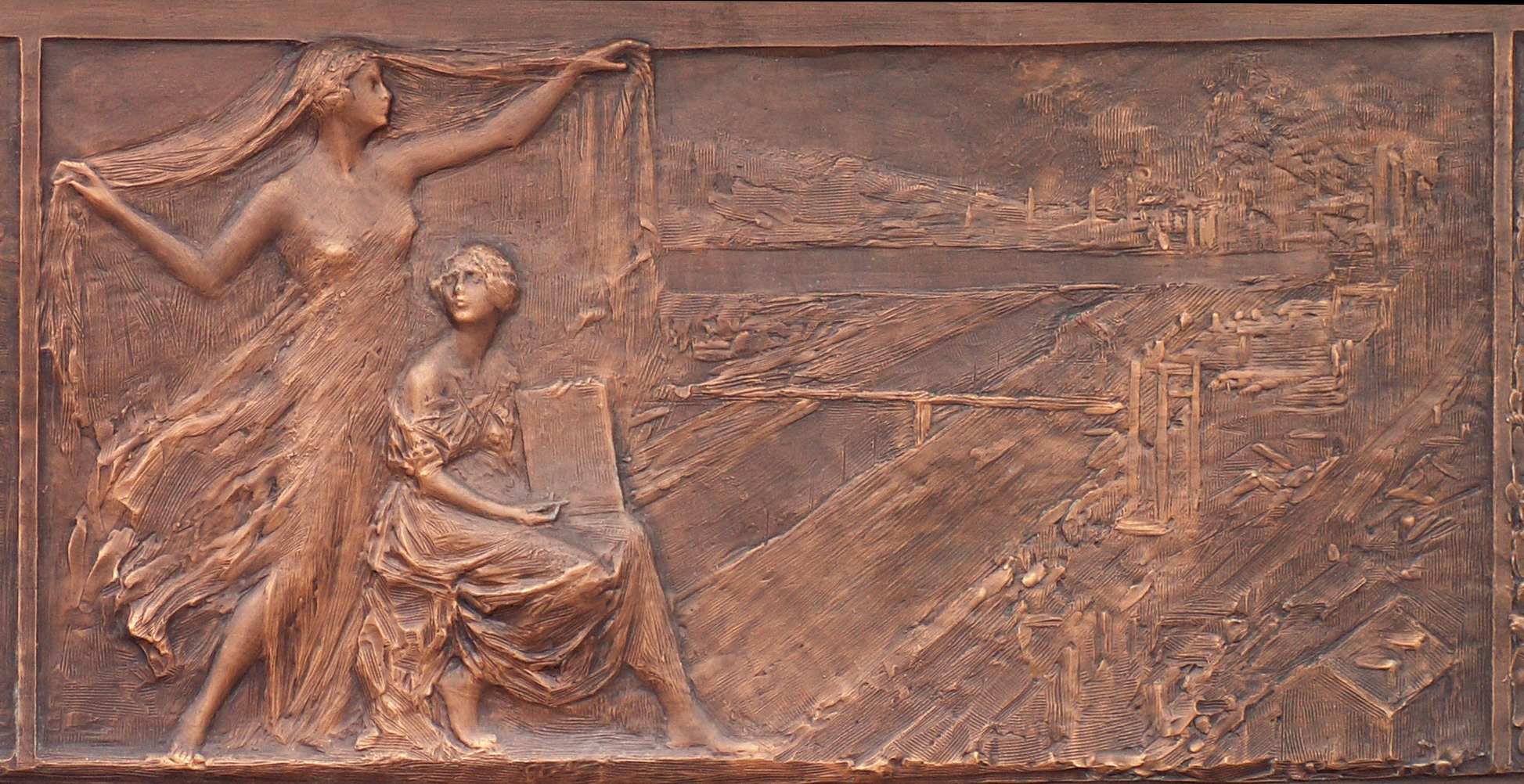One of Pittsburgh’s two most famous and most prolific sculptors (the other being Frank Vittor), Giuseppe Moretti decorated the entrances to Highland Park with extraordinary bronzes. Note that these two opposite figures are matching but entirely different: Moretti sculpted them from two different models and posed them differently, thus making literally twice as much work for himself as an ordinary sculptor would.
-
Welcome Sculptures by Giuseppe Moretti at the Highland Avenue Entrance to Highland Park
-
Decorations on the Rear of the Westinghouse Memorial

The Westinghouse Memorial is one of our best works of public art, and the thoroughness of the execution is one of the best things about it. It is meant to be seen from the front, but if you wander behind it you will find, not a blank wall, but lovingly detailed bronze decorations that almost no one ever sees.
Camera: Olympus E-20n.


-
A Railing in Heinz Hall
-
Remembering Those Who Served in the Civil War

The Civil War monument in Richland Cemetery, Dravosburg. The sculpture bears a maker’s plaque: “Manufactured by the W. H. Mullins Co., Salem, Ohio, U.S.A.”
Camera: Kodak EasyShare Z1485 IS.
-
H. J. Heinz Memorial Plaza, Sharpsburg

H. J. Heinz started his business in Sharpsburg, and he gave this plaza in the center of the town as a token of his gratitude. The bronze reliefs are by the notable sculptor Emil Fuchs. The main section of the top panel is an allegory of Industry; the main part of the lower panel shows H. J. Heinz himself teaching Sunday school at Grace Methodist Church.




The statue of an Indian, always identified as Guyasuta, is a duplicate of a duplicate. Heinz gave the town a splendid fountain, which was knocked down by a car in the 1930s. The statue of Guyasuta was replaced from the original molds, but that replacement was run over by a truck in the 1980s. This current incarnation has not been smashed yet.

Camera: Konica Minolta DiMAGE Z3.
-
Hygeia
-
Faces on the Times Building

Two carved Romanesque faces on the Fourth Avenue side of the Times Building.
Camera: Kodak EasyShare Z1485 IS.

-
World War I Memorial, West End Park
-
Edward Manning Bigelow
Giuseppe Moretti’s statue of Edward Manning Bigelow stands at the entrance to Schenley Park in Oakland. It was Mr. Bigelow’s persuasive ability that gave us Schenley Park, which was created from the land that had belonged to Mary Schenley, heir to the O’Hara glass fortune; she had left Pittsburgh and was living in England, where Mr. Bigelow went to see her. He fought hard for a park here, a woodland oasis in the middle of the rapidly expanding city, though powerful interests wanted the land for more urban development. Mr. Bigelow also planned several of the broad boulevards that meander through the eastern part of the city: Beechwood Boulevard, Washington Boulevard, and Grant Boulevard, which after his death was renamed Bigelow Boulevard.
-
St. Michael the Archangel Church, Munhall

This Slovak church is no longer used, but the building is still kept in good condition.

The Romanesque façade, with its colorful inlays, is something extraordinary even in a region of extraordinary churches.


The relief of Ss. Cyril and Methodius, apostles to the Slavs, shows more than a little Art Deco influence.
Until a few years ago, the tower held up a fine statue of St. Joseph the Worker, one of the last major works of the great Frank Vittor. It has been moved to St. Maximilian Kolbe parish, where you can see it at eye level.









